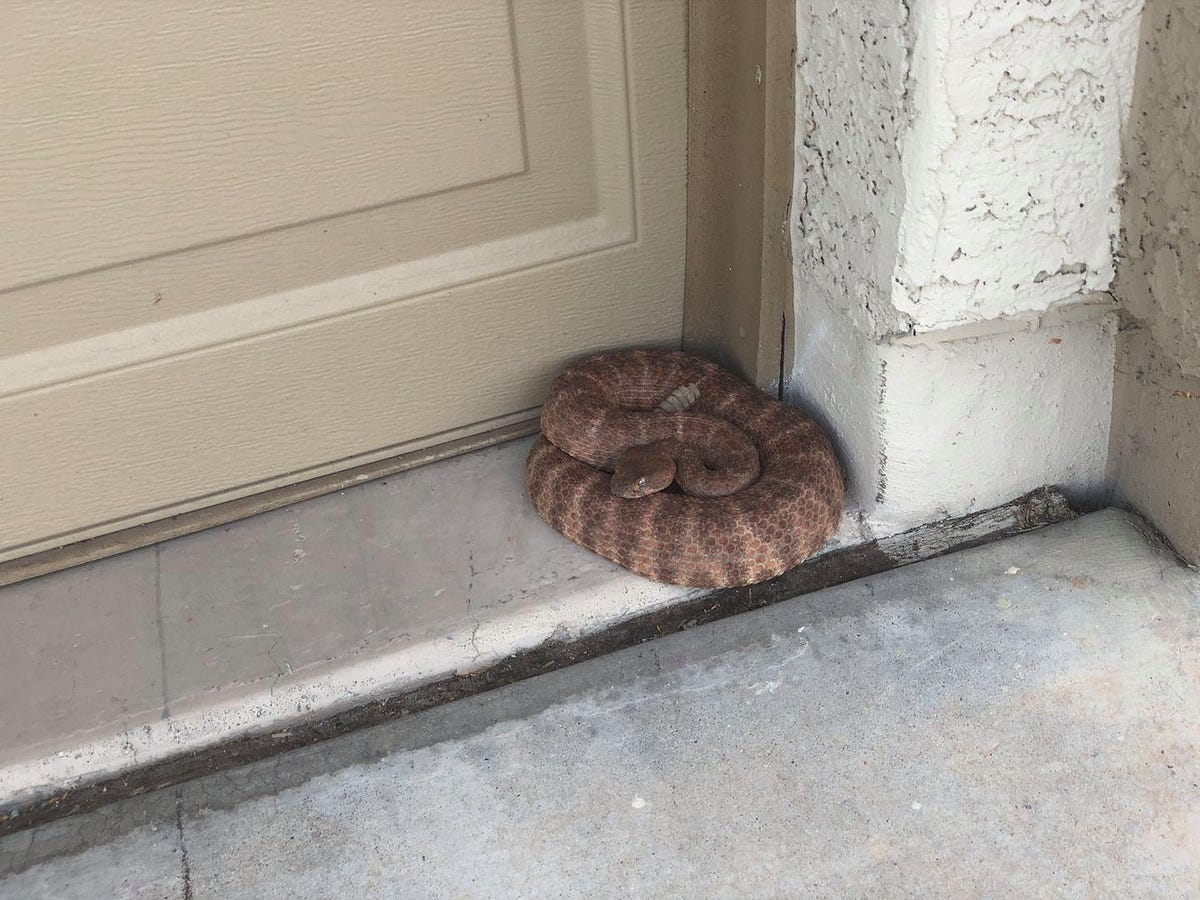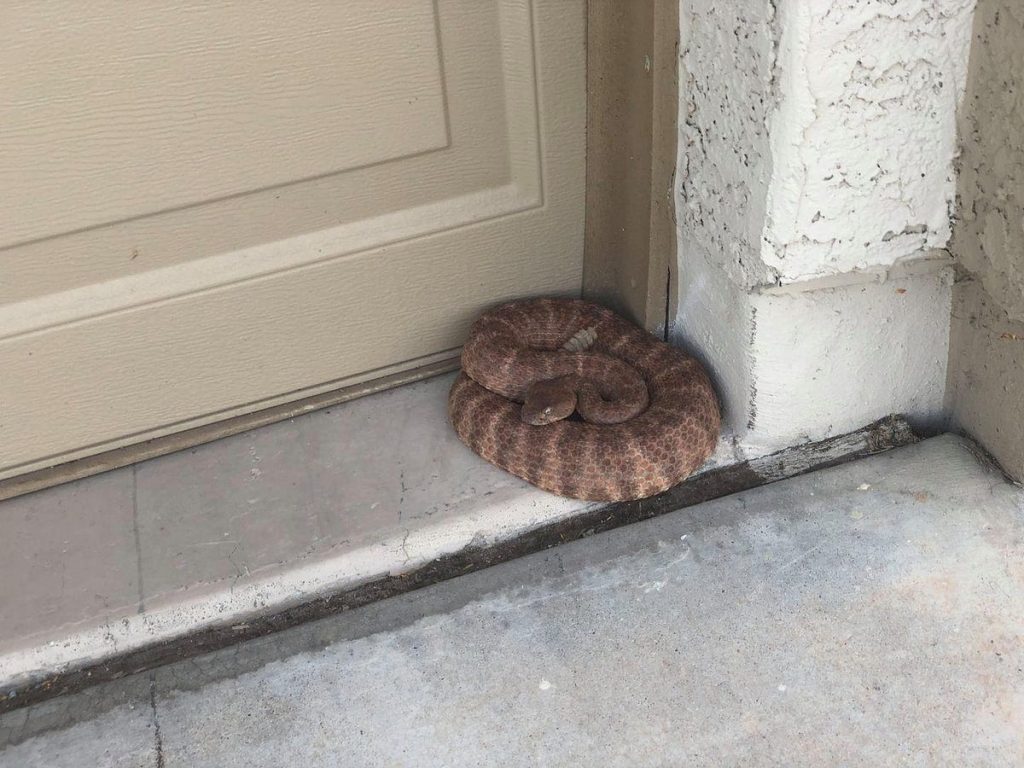Have you ever found a rattlesnake in your house and panicked? Well, you’re not alone! It’s a common fear for many people who live in areas where rattlesnakes are prevalent. In this article, we’ll discuss some tips and tricks for safely removing a rattlesnake from your home, so you can feel confident and prepared if it ever happens to you. So, let’s get started!
Finding a rattlesnake in your house can be a scary experience, but it’s important to stay calm and handle the situation carefully. Rattlesnakes are venomous and can be dangerous if not handled properly, so it’s crucial to know the right steps to take. In this guide, we’ll walk you through the process of getting a rattlesnake out of your house safely and efficiently. So, if you’re ready to learn how to handle this situation like a pro, let’s dive in!
Encountering a rattlesnake in your house can be a scary experience. The first step is to stay calm and avoid any sudden movements. Next, try to locate the rattlesnake and determine its location. If it’s in a room with a door, close the door to contain it. Contact a licensed wildlife removal company to safely remove the rattlesnake from your house.

How to Get a Rattlesnake Out of Your House?
Rattlesnakes are venomous snakes that can be found in many parts of the world. If you find a rattlesnake in your house, it can be a scary and dangerous situation. However, there are ways to safely remove the snake without harm to you or the snake. In this article, we will discuss the steps you should take to safely get a rattlesnake out of your house.
Step 1: Identify the Rattlesnake
The first step in getting a rattlesnake out of your house is to identify the type of snake you are dealing with. Rattlesnakes have a distinct rattle on their tail, which they use to warn potential predators or threats. They also have a triangular-shaped head and vertical pupils. If you are not sure what type of snake you have, it is best to assume it is a rattlesnake and proceed with caution.
Once you have identified the snake as a rattlesnake, it is important to keep a safe distance. Rattlesnakes can strike from a distance of up to two-thirds of their body length, so it is important to keep a safe distance of at least six feet.
Step 2: Call a Professional
If you are not comfortable dealing with the rattlesnake yourself, or if you are not sure how to safely remove the snake from your house, it is best to call a professional. There are many wildlife removal services that specialize in removing snakes and other wildlife from homes and buildings. These professionals have the necessary knowledge and equipment to safely remove the snake without causing harm to the snake or anyone else.
When calling a professional, be sure to provide them with as much information as possible about the location of the snake, its size, and any other relevant details. This will help them to prepare for the removal process and ensure that they are able to safely remove the snake without harm.
Step 3: Create an Escape Route
If you choose to remove the rattlesnake yourself, it is important to create an escape route for the snake. Rattlesnakes are territorial and will often return to the same area if they feel threatened. By creating an escape route for the snake, you can encourage it to leave your house and find a new home elsewhere.
To create an escape route, open all the doors and windows in the room where the snake is located. This will provide the snake with a clear exit path and encourage it to leave your house on its own.
Step 4: Use a Snake Hook
If you choose to remove the snake yourself, it is important to do so safely. One way to do this is by using a snake hook. A snake hook is a long, thin pole with a hook on the end that is used to gently lift and move the snake. This allows you to safely remove the snake without causing harm to the snake or yourself.
When using a snake hook, it is important to remain calm and move slowly. Rattlesnakes are sensitive to movement and vibrations, so sudden movements can startle them and cause them to strike.
Step 5: Use a Snake Trap
Another way to safely remove a rattlesnake from your house is by using a snake trap. Snake traps are designed to capture snakes without harming them, allowing you to safely relocate the snake to a new location.
To use a snake trap, place the trap in the area where the snake is located. You can use bait, such as a live mouse or rat, to attract the snake to the trap. Once the snake is trapped, you can safely relocate it to a new location far away from your house.
Step 6: Seal Entry Points
After you have removed the rattlesnake from your house, it is important to seal any entry points to prevent future snakes from entering your home. This can be done by sealing gaps around doors and windows, repairing holes in walls or siding, and installing screens on vents and chimneys.
By sealing entry points, you can help prevent future snake infestations and keep your home safe and secure.
Step 7: Educate Yourself
One of the best ways to prevent snake infestations in your home is by educating yourself about snakes and their behavior. By understanding how snakes behave and what they are attracted to, you can take steps to prevent them from entering your home in the first place.
There are many resources available online and in your community that can help you learn more about snakes and how to safely deal with them.
Step 8: Keep Your Property Clean
Snakes are attracted to cluttered and overgrown areas, so it is important to keep your property clean and well-maintained. This includes trimming overgrown vegetation, removing debris and clutter, and storing firewood and other materials away from your house.
By keeping your property clean and well-maintained, you can help prevent snakes from finding a home on your property.
Step 9: Stay Alert
Even if you have taken steps to prevent snake infestations in your home, it is important to stay alert and aware of your surroundings. If you see a snake on your property or in your house, it is important to take immediate action to remove the snake safely.
By staying alert and aware, you can help ensure the safety of yourself, your family, and your pets.
Step 10: Seek Medical Attention if Bitten
If you or someone else is bitten by a rattlesnake, it is important to seek medical attention immediately. Rattlesnake bites can be very dangerous and can cause serious health problems if left untreated.
When seeking medical attention, be sure to provide as much information as possible about the snake, including its size and color, the location of the bite, and any other relevant details.
In conclusion, getting a rattlesnake out of your house can be a scary and dangerous situation. However, by following these steps and taking the necessary precautions, you can safely remove the snake without harm to yourself or the snake. Remember to stay alert and educated about snakes, and always seek medical attention if bitten.
Frequently Asked Questions
What should I do if I find a rattlesnake in my house?
If you find a rattlesnake in your house, the first thing to do is to stay calm and keep your distance from the snake. Rattlesnakes are venomous and can be dangerous, so it’s important to take precautions. You should call a professional snake removal service to safely remove the snake from your house. Do not attempt to remove the snake yourself, as this can be very dangerous.
How can I prevent rattlesnakes from entering my house?
There are several steps you can take to prevent rattlesnakes from entering your house. First, seal any cracks or holes in your foundation or walls. Make sure all windows and doors are tightly sealed, and consider installing snake-proof mesh screens. Keep your yard free of debris and clutter, and remove any potential hiding places for snakes. Finally, consider installing a snake fence around your property to keep snakes out.
What should I do if I get bitten by a rattlesnake?
If you get bitten by a rattlesnake, seek medical attention immediately. Rattlesnake bites can be very dangerous and can cause serious health problems, including tissue damage, organ failure, and even death. Do not attempt to suck out the venom or cut the wound, as this can make the situation worse. Keep the affected limb immobilized and stay as calm and still as possible until help arrives.
How can I identify a rattlesnake?
Rattlesnakes are easily recognizable by their distinctive rattle, which they use to warn off potential predators. They also have triangular heads, vertical pupils, and heat-sensing pits between their eyes and nostrils. Their coloration can vary, but most species have a pattern of dark brown or black bands on a lighter background. If you see a snake that you suspect may be a rattlesnake, stay away and call a professional snake removal service.
Are there any natural remedies to get rid of rattlesnakes?
While there are many natural remedies that claim to repel or kill rattlesnakes, most of these have not been scientifically proven to be effective. Some popular remedies include mothballs, sulfur, and essential oils, but these are unlikely to be effective in getting rid of snakes. The best way to get rid of a rattlesnake is to call a professional snake removal service.
In conclusion, dealing with a rattlesnake in your house can be a scary and daunting experience, but it’s important to stay calm and take the necessary precautions to avoid getting bitten. Remember to keep a safe distance and avoid any sudden movements that may agitate the snake further.
When attempting to remove the snake, it’s important to use the right tools and techniques, such as using a snake hook or calling a professional wildlife removal service. Making sure your house is sealed up properly and removing any potential sources of food or shelter can also help prevent future encounters with snakes.
Above all, it’s important to respect the wildlife around us and take the necessary steps to coexist safely with them. By following these guidelines, you can safely and effectively remove a rattlesnake from your house and prevent future encounters.


